This is the second post in a series on feminism. Be sure to check out Origins & First Wave, 3 Third World Feminists You Should Know, and Reflections on Faith, Feminism, and Identity.
Welcome to the second installment of Feminist Friday! Today’s topic is second wave feminism. The revolutionary nature of second wave feminism is what many think of when they characterize the entire movement as “those crazy feminists” – so we’re bound to have some fun!
This post is a short synopsis (not a thorough education), and it’s meant to help us better understand this word that we throw around so often in Christian debates about a “woman’s place”. So please check out why we are writing about feminism, and be open to some good discussion!
What Started the Second Wave of Feminism?
Second wave feminism, or the “women’s liberation movement”, came about in a time of great social upheaval in the United States. The status quo was being challenged from almost every angle. The Black Power & Civil Rights movements, the Anti-Vietnam movement, the Chicano Civil Rights movement, the Asian-American Civil Rights movement, and the Gay & Lesbian movements were all going strong during this time.
Women were involved in all of these movements, and while fighting for the rights of their respective “groups” they found themselves pushed to the back because of their gender. This became a significant catalyst for second wave feminism.
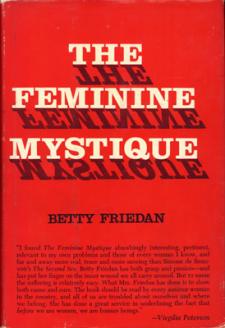 “Mainstream feminism” is believed to have been ignited by the publication of Betty Friedan’s “The Feminine Mystique” in 1963, which challenged the 1950s American idea that women were naturally fulfilled by marriage and child rearing. It criticized everything from 1950s psychology to the educational system, for the part each played in the societal oppression of women.
“Mainstream feminism” is believed to have been ignited by the publication of Betty Friedan’s “The Feminine Mystique” in 1963, which challenged the 1950s American idea that women were naturally fulfilled by marriage and child rearing. It criticized everything from 1950s psychology to the educational system, for the part each played in the societal oppression of women.
But it wasn’t until the protest of the 1968 Miss America beauty pageant that Women’s Liberation was launched in the public consciousness. Women organized outside of the convention center and protested the superficial standards of women’s worth used to judge the pageant. They protested society’s objectification of women, saying that it upheld impossible standards of beauty that required makeup and plastic surgery to achieve.
FUN FACT- The term “bra burners” came from this demonstration at the Miss America Pageant. Protesters had a “Freedom Trash Can” in which they threw false eye lashes, high heels, curlers, playboy magazines, and bras. They had been unable to obtain a fire permit, however, so nothing was actually burned!
The Women’s Liberation Movement went on to hold other rallies and protests, and to form organizations such as the National Organization for Women (1966), The Red Stockings (1969), and The Ms Foundation (1973). Magazines and books were published, pushing the movement forward in the public mind. All of this helped to gain support for feminists and their agenda.
The Feminist Agenda
The Women’s Liberation Movement was not just a social movement, it was a political one as well. The reality is that women lacked certain political rights in the United States at that time, and if feminism hadn’t focused on politics, women might still lack the freedoms won by that movement. Here are some highlights from the “feminist agenda” of the 60s & 70s:
Banking/Credit
Until the passing of the Equal Credit Opportunity Act of 1974, women were not allowed to apply for their own line of credit. In fact, banking was so inhospitable to women that in 1975 the first Women’s Bank was opened.
Equal Pay for Equal Work
The Equal Pay Act was signed in 1963 by President John F. Kennedy, finally making it illegal for employers to pay unequal wages to men and women who hold the same job and do the same work.
At the time white women earned just 58 cents for every dollar earned by white men, and black women earned 48 cents for every dollar earned by white men.
Protection from Violence & Sexual Harassment
At Work
The first time that a court recognized sexual harassment in the workplace was in 1977 and it wasn’t until 1980 that sexual harassment was officially defined by the Equal Employment Opportunity Commission.
In the Home
Domestic violence and sexual assault in the home before 1976 were considered culturally acceptable due to historical and social understandings of marriage. Although the fight against marital rape started in the 70s, it wasn’t criminalized in all 50 states until 1993.
Quality Gynecological Care & Maternal Health
In the 1960s & 70s, women lacked access to comprehensive health care. There were even reports about the systemic mistreatment of women by practitioners. Women had been denied genuine access to knowledge about how their bodies work and how to take care of themselves. In addition, women were routinely excluded from and underrepresented in clinical research studies. All this led to women creating their own health clinics to address these concerns, and demanding policy changes for the greater health care community.
Women also demanded better and safer options for childbirth, as well as employment regulations. Until the Pregnancy Discrimination Act in 1978, women could be fired from their workplace for becoming pregnant.
Contraception
In 1960 the FDA approved the first oral contraceptive for sale as birth control in the United States. This introduced the radical notion that women could decide when they wanted to have children. It also gave women an unprecedented chance to hold a job and build a career. In the span of 5 years, 6.5 million American women were on the pill.
Contraceptive medications did not only help in family planning, they also significantly improved women’s health by treating dysmenorrheal, relieving symptoms of endometriosis, reducing heavy menstrual bleeding and improving anemia, reducing symptoms of premenstrual dysphoric disorder, reducing risk of ovarian, uterine, and colon cancer, and preventing menstrual migraines.
Equal Rights Amendment
The Equal Rights Amendment (ERA) is a proposed amendment to the US Constitution that would guarantee equality under the law for women. First written in 1923 by Alice Paul, it had been introduced to Congress for many years, eventually being re-written and reintroduced by NOW during second wave feminism.
The ERA finally passed the U.S. Senate and House of Representatives in 1972. Congress gave the states 10 years to ratify it. But in 1980, the Republican Party removed support for the ERA, and it fell short of ratification by 3 states. The movement to pass the ERA continues to this day.
Abortion
Much of the fight of the second wave of feminism stemmed from the lack of legal, political, and constitutional protection afforded to women and their bodies. We saw this in previously covered topics such as medical care, sexual harassment, and domestic violence. We also see it in the fight to legalize abortion. Feminists argued that such a medical procedure should be protected under a woman’s constitutional right to privacy, and should only be decided by a woman and her doctor.
In January 1973, the U.S. Supreme Court made a decision in the landmark case Roe v. Wade. The court ruled that the First, Fourth, Ninth, and Fourteenth Constitutional Amendments protected a person’s “zone of privacy”, and that this right to privacy extended to a woman’s decision to terminate a pregnancy.
People were understandably divided about the ruling. Many celebrated that women were assured that their personhood and bodies were protected under the Constitution in the same way that men’s were. On the other hand, many others believed that protecting human life in the womb brings with it another conversation about ethics that goes beyond a woman’s body. It remains a controversial issue to this day, even among feminists (See Feminists for Life for example).
Sports
It wasn’t until President Richard Nixon signed Title IX of the Education Amendments of 1972 that schools receiving federal funds were required to provide girls and women with equal opportunity to compete in sports.
The Racial Divide
It is important to know that “mainstream feminism” of the 1960s & 70s was predominantly white and marginalized women of color. Its leadership was white, it focused solely on the United States, and it treated sexism as the “ultimate oppression”, largely disregarding the effects of racism. And while the movement would eventually realize its mistakes and become more inclusive, it started out as an ethnically homogenous group.
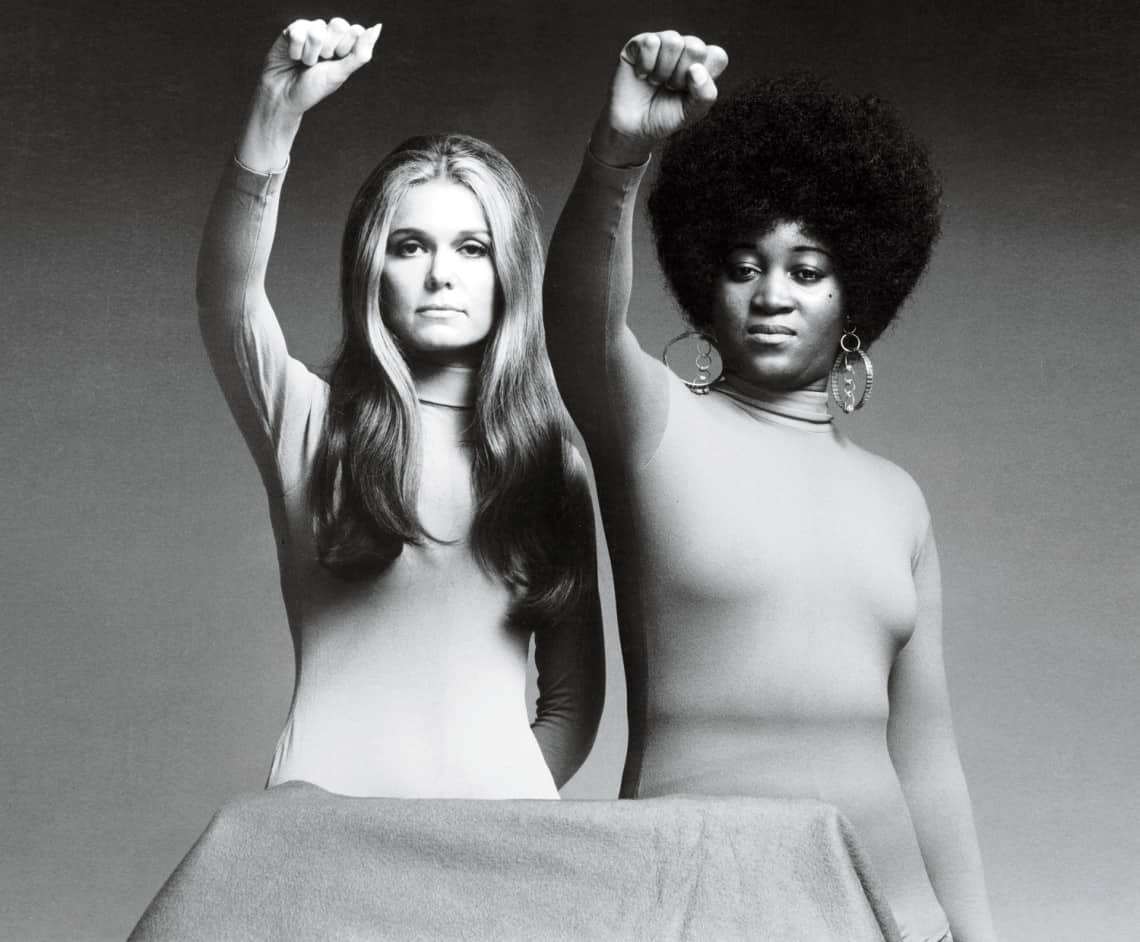
The feminist movements of women of color tended to be more international in focus, and they were better at interweaving the stories of racial and sexual oppression. Feminists of color were involved in women’s caucuses in mixed-gender organizations, their own autonomous Black, Latina, Native American, and Asian American feminist groups, and mainstream feminist groups.
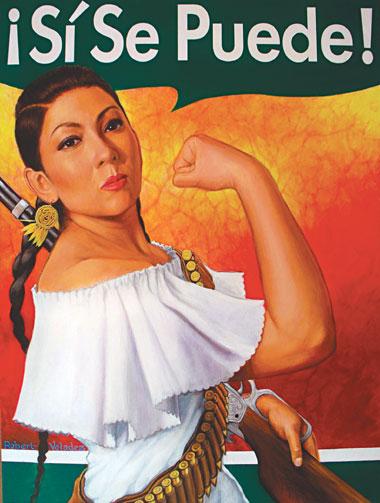 One of the earliest second wave feminist movements in the United States was Chicana Feminism, which emerged in the early 1960s out of the gender inequalities Chicanas experienced during their active participation in both the Chicano and Mexican American Civil Rights Movements. Throughout the Southwest, Chicanas developed their own feminist publication outlets. “Las Hijas de Cuauhtémoc” was one of the nation’s first feminist newspapers, and it told the stories of many first generation Chicana college students. Read more about the Chicana feminist movement!
One of the earliest second wave feminist movements in the United States was Chicana Feminism, which emerged in the early 1960s out of the gender inequalities Chicanas experienced during their active participation in both the Chicano and Mexican American Civil Rights Movements. Throughout the Southwest, Chicanas developed their own feminist publication outlets. “Las Hijas de Cuauhtémoc” was one of the nation’s first feminist newspapers, and it told the stories of many first generation Chicana college students. Read more about the Chicana feminist movement!
Black feminism formalized in 1968 in the form of Black Women Organized for Political Action.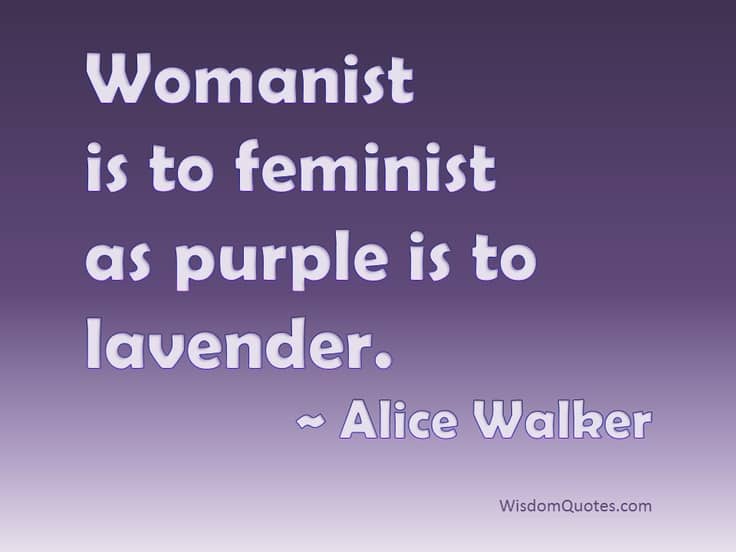 Unlike the mainstream feminist movement, Black feminism focused on the intersection of sexism, racism, and class oppression. Womanism came from this movement, and is thought by many to better encompass the experiences and mindsets of black women. Alice Walker coined the term in her 1979 story “Coming Apart”, but the movement became more formalized in the 1990s and 2000s. Read more about the Womanist movement here and here!
Unlike the mainstream feminist movement, Black feminism focused on the intersection of sexism, racism, and class oppression. Womanism came from this movement, and is thought by many to better encompass the experiences and mindsets of black women. Alice Walker coined the term in her 1979 story “Coming Apart”, but the movement became more formalized in the 1990s and 2000s. Read more about the Womanist movement here and here!
FUN FACT – Shirley Chisholm was the first major party Black candidate for president, the first woman to run for the Democratic presidential nomination, and the first African-American woman elected to Congress!
Although a blog post is an insufficient platform for such a topic, I hope that this short overview of second wave feminism helps provide context to the word “feminism”. For a more thorough look at the Women’s Liberation Movement, check out the documentaries listed below.
Join us next week for another installment of Feminist Friday!
———
Note: My personal study of second wave feminism included a focus on Black, White, and Chicana feminist movements. I apologize for the lack of knowledge about other feminist movements of the time.
Recommended Resources:
This Makers Documentary Series is FANTASTIC!
This 6-part documentary series on women is also very good!




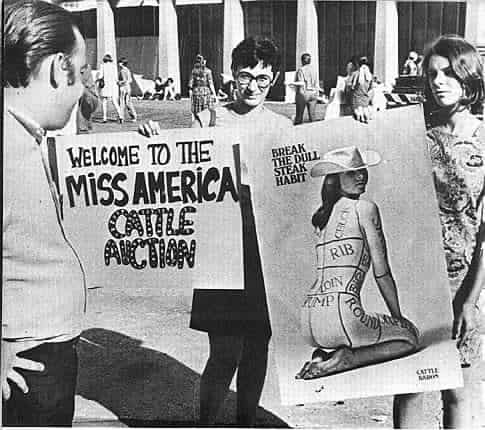

18 Comments
Hi Kate! I attempted to posted under an article from 2013 “Why I’m a feminist and an egalitarian…” but, this article raises similar questions for me anyway!
First of all – thank you for writing! It’s allowing me to think more clearly and deeply on the subject and opened up great conversation amongst my friends! I’d consider myself an egalitarian, and therefore want to learn as much as I can, support women and be part of a church that upholds gospel-equality with passion. I had two questions for you!
My first question regards the exaltation of feminist ideology within Christianity. You’ve made clear distinctions between egalitarianism as an internal theological belief within the faith, and feminism as the outer tool to fight for the rights and equality for women. My question here is whether or not the clarity of terms is helpful in understanding how feminism (by your definition – simply the advocation for rights and equality for women) fits into a broader gospel narrative.
I’m of two minds about are terms like “Jesus was a feminist”. In one sense, yes! Of course Jesus cared about and advocated for the rights and equality of women. But he was also about much more – and so should we be. In a way I suppose I’m much more comfortable with “Jesus was Jesus”, and allowing our views on equality and social transformation emanate from that.
What I mean is (and what I know you understand, which is why I ask) that the gospel holds much more concerning renewal and equality beyond gender. Racially, economically, socially – the list goes on. So, A) By viewing feminism as on “outer tool” do you feel there is a danger in becoming myopic and missing the gospel’s broader emphasis on equality? And B) My concern here is also that a feminist ideology could lose it’s Christian root by how it manifests itself through advocation and “fighting for rights.”, if it’s understood as an “outer tool”. Do you see any concern with feminism becoming too prominent an ideology for us, wherein our primary narrative becomes that of a feminist, rather than Christian – and the core of feminism loses it’s power? How do we balance an emphasis on (desperately needed) equality advocation with the broader gospel – as this narrative is truly to be our primary story as Christians?
My second question pertains to Christian unity. It would seem you’ve been clear that you feel complementarian and patriarchal theology is really one and the same. You stated in a comment that for you patriarchal systems were a result of the fall and therefor are not part of God’s true vision for the world and his intent for human’s as image bearers. As an egalitarian myself, I would agree.
The challenge for me, however, is Christian unity. Those who are card carrying complementarians would suggest the same that you are, just in opposite terms – that egalitarianism isn’s God’s vision for the world based on their reading of scripture. In the past I have been comfortable with the notion that this a hermeneutical issue, does cause some problems, but ultimately Christian unity can still be achieved. It would seem (based on your words here, and what I’ve heard for many years from the opposing viewpoint) that both sides would in no way see this as as a “secondary issue” – and I truly struggle to even use that term, as the rights and freedoms for women is in no way “secondary” for me. Would you say that this theological and hermetical division automatically puts the egalitarian and even “soft” complementation at odds, unable to rally around the same gospel? Are there bridges to be built, or do you feel there needs to simply be more burning and outright opposition based on the obviously urgent plight of women around the world?
Thanks so much for you time and thought! Please forgive any ignorance surrounding terminology or perspective – I’m trying to learn 🙂
Hi Luke,
Thanks for your comment. I think your concerns are well laid out and articulated. I’ll try my best to answer your questions.
To your first one – Yes I think there is the possibility for some to focus on feminism and lose sight of the other elements of equality that the Gospel propels. I say this because I actually think it has happened in reverse already. I think the other elements of equality in the Gospel (racial, socioeconomic, class), although still divisive, are much more palatable to the average evangelical sitting in the pew than the equality of women. The Gospel Coalition, for example, isn’t taking a doctrinal stance against any race or socioeconomic class. They do however take a stance against women.
To your second part of the question, I’d say that I do often think about how my feminism and my Christianity inform each other. This is more tricky. Because the “Christian narrative” as you put it, has been historically written by men, it often doesn’t fit women very well. For example, men often place the sins they deal with (pride, sexual lust, selfishness) in opposition to a holy life. But for many women, these are not their main struggles. They naturally give up authority and act selfless. This may not mean they are more Christ like, it may mean that what is keeping these women from living the holy life is their lack of confidence in how God created them and what he created them for. Perhaps these women need to learn how to take up more space, not give up the space they have. So in this sense I’d say that I hope my feminism empowers me enough to take ownership of my Christian narrative so that it actually fits me. But it is indeed a great question and a tricky topic.
To your other question, yes there are huge divisions on this topic. It’s a difficult question to answer because I think women have been pushed to the back a lot in an effort for “unity”. And what that then means is that the organization or denomination or church that is striving for unity is actually making concessions to complementarianism. So those who don’t want to work with women are catered to out of an effort for “unity” and women are relegated to the background. This isn’t real unity. It is simply unity among men. So, I’m not sure how to answer this question. It sure seems like an up hill battle sometimes.
Hi Kate,
Thanks so much for your speedy reply. These perspectives are most helpful for me, and I agree with much of what you’ve point out, especially the “reverse focus” as you mentioned – quite true. I’m not sure about a “gender-prone” sin notion (will need to think through that) but I do see the point you’re making in terms of a historically male dominated leadership and Jesus’ model of leadership often being better represented by women – concerning selflessness, certainly. I’ve often thought that.
I certainly also appreciate your comments on concessions we make surrounding complementarianism and unity. Those thoughts are helpful in my journey and questions surrounding gender, Christianity and how much we need to emphasize egalitarian views in the face of what many feel is harmless thinking but it’s actually terribly detrimental.
Thanks again! Happy Easter…
Ezekiel 18 and Ezekiel 33 address God’s view of equality plainly…
Ezekiel 18:25 KJV
25 Yet ye say , The way of the Lord is not equal . Hear now, O house of Israel; Is not my way equal ? are not your ways unequal ?
Ezekiel 18:29 KJV
29 Yet saith the house of Israel, The way of the Lord is not equal . O house of Israel, are not my ways equal ? are not your ways unequal ?
Ezekiel 33:17 KJV
17 Yet the children of thy people say , The way of the Lord is not equal : but as for them, their way is not equal .
Ezekiel 33:20 KJV
20 Yet ye say , The way of the Lord is not equal . O ye house of Israel, I will judge you every one after his ways.
How can anyone disagree with this plain, explosive, often repeated and unequivocal declaration by God in contrast to the opinion of Paul?
I remember flower power and bra burning and anti-war protests and all. Male chauvinism ran rampant. You’d think that the younger generation in the late 60s would be more enlightened, but even there it was evident. Men saying things like “The chicks can bring the food to us at the protest” were not uncommon.
In this second wave feminism, Kate, where did you see the work of the church? Are there elements of the body of Christ – or perhaps prominent individuals – that were pursuing feminism in the 60s and 70s?
The Female Eunuch by Germaine Greer made huge waves in Australia in the 70s, I am 60 now and remember my amazed and positive reaction when my uncle gave me a copy of the book! It isn’t very positive about religion of the time, but opened my eyes somewhat. Of course I was earning much less than males in my first jobs, but came from a church where women were irrepressible and I never knew I couldn’t do anything…wouldn’t have listened anyway….way to go my mum who made sure I had a good education, and got a job.
So good, Kate! Funny how something that is often described as anti-Church and anti-God is in most points so in line with the heart of Christ. I am realizing that the few negatives that feminism has brought (like abortion) are highlighted exclusively while the myriad of healthy, godly things are ignored. Loving this series!
Hi Kate! This is so beautifully and holistically written. This is such a necessary education for the church and the general public. As an African-American woman, I am grieved by the racist and sexist attitudes alive in the church and world even still today. It is so tragic that much of the history of feminism has been lost and replaced with over-generalized statements. I believe that so much of the history has been ignored because the church would have to acknowledge and REPENT of its own sinful attitudes and behavior towards women. Thank God for ministries like this who work with God to redem His creation to what it was always meant to be. Kudos to Feminist Friday! God Bless You
Thank you Leah, I really appreciate that. Happy Feminist Friday to you!
Kate, what a great post. I learned A LOT that I didn’t know about second-wave feminism. Thanks so much! One thing that repeatedly came up in my dissertation research is that the feminist movement during the time period you cover benefited White women at the expense of women of color. This made sense to me since social systems that are inequitable are still going to advantage those with power and privilege – so White women were already in a position (poised, so to speak,) to benefit. I had never thought about that, and it made me both sad and angry, but it uncovered something I needed to know. One thing I love about the Junia Project is all of the ways that you are making “visible” issues that have stayed hidden in the church regarding women’s position and status. So appreciated and so admire what you all are doing!
Thanks Stephanie! Yes it is a sad part of feminist history. We must try not to repeat any of their mistakes.
Excellent! Much needed account! Thank you!
At the same time –70-80s, corporate profits were rising, but were not being passed to workers’ wages. The cost of living was rising. More white women had to go to work to keep their families alive. Of course, many women had never NOT worked outside the home. What gets credited to feminism was also or sometimes only in response to economic needs, a neglect of economic justice for employees of large corporations. I just learned this from my son who is teaching U.S. Economics in high school.
In this crisis situation, feminism helped make it possible for women to get into the workplace, and this helped them economically, but also added a lot of stress to women, for many still carried the work load at home.
Great info Karen! Thanks!
One of the side effects was that pay toilets were eliminated, due to a court ruling such were unfair to women.
THANK YOU for bringing to light Chicana Feminist history! It always seems that when people speak of “people of color” they never seem to pay attention to the LATINAs.
Theresa, just discovered your comment in our Spam folder for some reason, so sorry it didn’t show up sooner! We are posting more on feminist movements like this on Friday, so stay tuned!